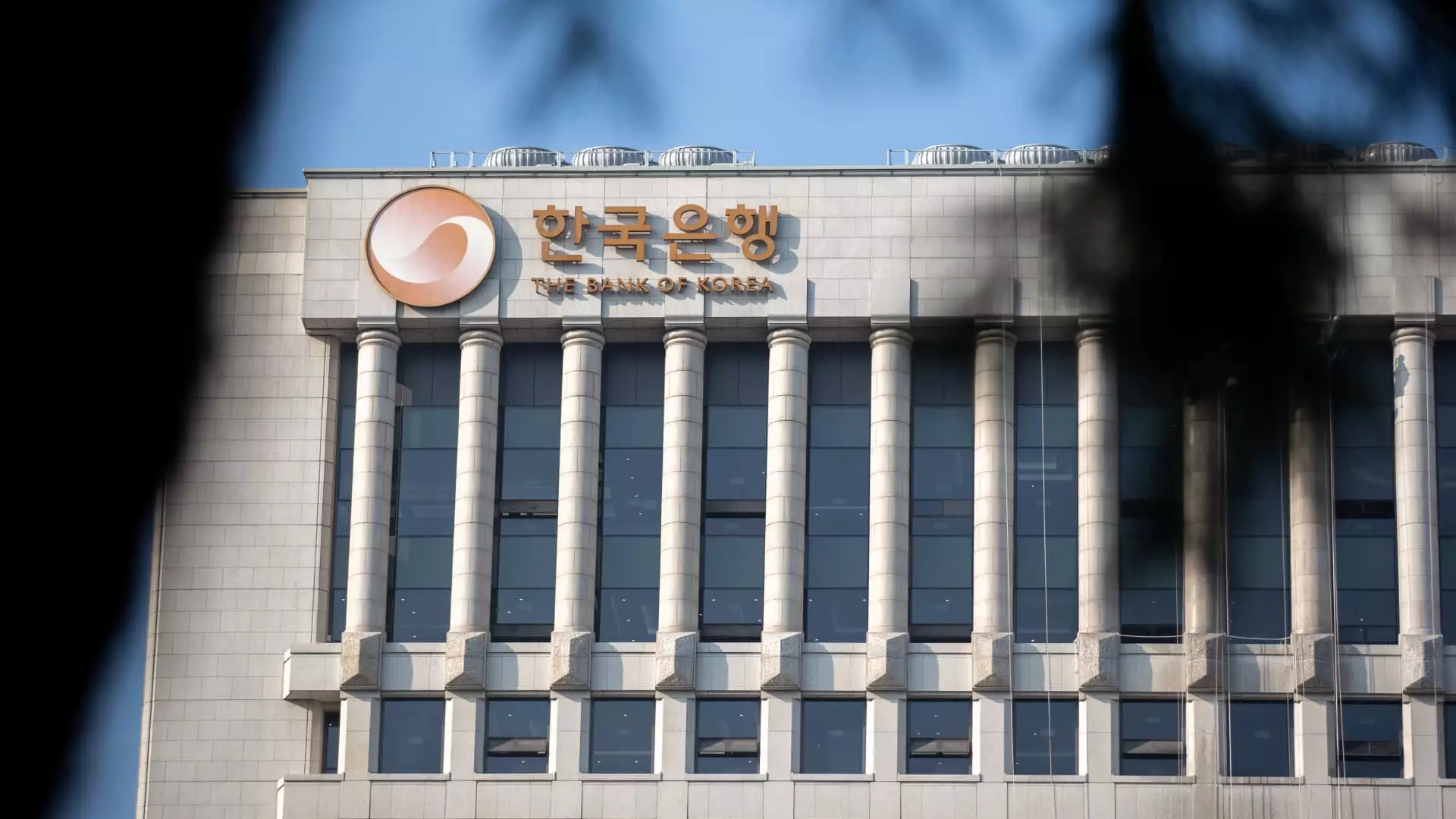In an alarming move that underscores the fragile economic landscape, South Korea’s central bank has slashed its key interest rate by 25 basis points. The Bank of Korea (BOK) has now brought the rate down to 2.5%, a level it hasn’t seen since August 2022. This decision, which marks the fourth adjustment in a mere six meetings, is not just a reaction to ongoing economic challenges but is also a desperate measure amid the clamorous backdrop of political instability. The severity of the situation is emphasized by the botched attempts of former President Yoon Suk Yeol to impose martial law, which has left the nation’s political environment rattled and unpredictable.
The ramifications of such political turmoil cannot be overstated. It not only creates a climate of uncertainty but also hampers investor confidence, leading to paralyzed economic activity that manifests in declining GDP growth. This is the case for South Korea, which unexpectedly reported a 0.1% contraction in its gross domestic product for the first quarter. This downturn is the first of its kind since late 2020, marking a stark departure from the rosy projections that once characterized the nation’s economic trajectory.
Trade Tensions Reshape Economic Outlook
Adding another layer of complexity to South Korea’s predicament are the punitive tariffs imposed by the Trump administration. The so-called “reciprocal tariffs,” which hit South Korea with a staggering 25% duty, remain suspended only temporarily. Time is of the essence, and South Korean leaders are racing against the clock to negotiate a new trade package with the U.S. Despite initial optimism, the stark reality is that critical timelines may not align; upcoming elections could muddle negotiations further, impeding the chance for immediate resolutions.
The approach to economic cooperation appears uncertain, especially with the South Korean minister for trade and industry acknowledging that the clock is ticking ominously close to the impending July 8 deadline. As political fragmentation intensifies, the likelihood of a coherent economic strategy diminishes. The snap elections on June 3, a direct fallout from Yeol’s impeachment, will entrench both uncertainty and volatility into the market dynamics, culminating in a precarious situation.
A Grim Forecast for GDP Growth
The Bank of Korea’s recent decision to cut interest rates was accompanied by a downgrading of its GDP forecast for 2025, slashing it to an alarming 0.8%. This revision highlights the stark pessimism permeating the economic landscape. With analysts like Gareth Leather from Capital Economics projecting even lower growth figures of around 0.5%, we can’t ignore the chilling reality: the expected fiscal stimulus from the newly elected president may simply not be enough to counteract the headwinds faced by critical sectors such as real estate and exports. Such an environment risks perpetuating an ongoing cycle of economic stagnation, which stands to disconcert South Korean households immensely, given their already fragile financial situations.
Despite the negligible injection of optimism expressed through the Kospi stock index, which rebounded by 1.25% following the rate cut, this is not the time for superficial cheer. The weakening of the Korean won against the dollar—trading at around 1383.40—further reflects underlying vulnerabilities that can have dire implications, fueling inflationary pressures and reducing purchasing power for the average citizen.
Concluding Thoughts on Economic Survival
The current trajectory appears fraught with peril for South Korea. With a perfect storm of political chaos, poor economic indicators, and unfavorable trade relationships, we face a scenario where the typical remedies may not be sufficient. The onus lies not just with policymakers but with an electorate that must grapple with the complexities of these challenges. As citizens prepare to cast their votes, the question that looms large is: can they elect leaders capable of steering the nation away from impending decline or will we continue down this path of uncertainty? Hope is necessary, but the evidence suggests it’s going to be a long, arduous journey toward recovery.



Leave a Reply